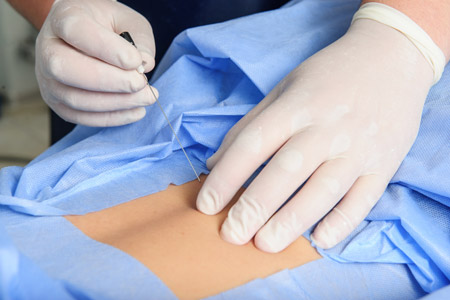Zygapophysial joints (also known as facet joints or z-joints) are located on the back (posterior) of the spine on each side where two adjacent vertebrae meet. The facet joints provide stability and permit the spine to bend and twist. The joint contains cartilage between bones and is surrounded by a sac-like capsule that is filled with synovial fluid (lubricating liquid that reduces the friction between bony surfaces with movement).
WHAT IS FACET JOINT PAIN?
Facet joint syndrome is pain at the joint between two vertebrae in your spine. Another term for facet joint syndrome is osteoarthritis. The facet joints are thejoints in your spine that make your back flexible and enable you to bend and twist.
Most back pain will improve within a few weeks with conservative medical care including options like relative rest, nonsteroidal anti-inflammatory medications, physical therapy, and exercises. If you suffer from back pain for more than six weeks despite appropriate medical care, Dr Shaikh may order diagnostic tests like x-ray, MRI (magnetic resonance imaging), or CT (computed tomography) scans to evaluate the structure of the spine. A problem (such as inflammation, irritation, swelling, or arthritis) in the facet joints may contribute to low back pain and may be visualized on diagnostic imaging. However, normal appearing joints on diagnostic imaging do not completely rule out facet joints as source of pain.
To determine if the facet joint is truly the source of pain, an injection (sometimes called “block”) may be performed. If the low back pain pain is reduced or relieved after an anesthetic or numbing medicine is injected into the facet joint or onto the small nerve that supplies the joint, your healthcare provider may feel confident that the facet joint is the source of your pain. If the facet joint is felt to be the source of your pain, a corticosteroid or steroid (strong anti-inflammatory) may be injected in addition to the numbing medicine to provide longer term relief of the pain.
HOW ARE FACET INJECTIONS PERFORMED?
Facet injections may be intraarticular (into the joint) or medial branch blocks (where the medication is injected onto the nerve). These procedures are performed while you are awake using local anesthetic (numbing) much like when you see the dentist. If needed, some medications may be given to help you feel more relaxed or comfortable for the procedure. You will be positioned lying on your stomach and you will be hooked to monitors to watch blood pressure, heart rate, and oxygen level. Your physician or an assistant will clean and sterilize the area. The injection is performed with the use of x-ray guidance called fluoroscopy. Before the procedure your physician will explain the risks, benefits, alternatives, and complications and obtain your consent to perform the procedure. The procedure takes approximately 30-60 minutes

